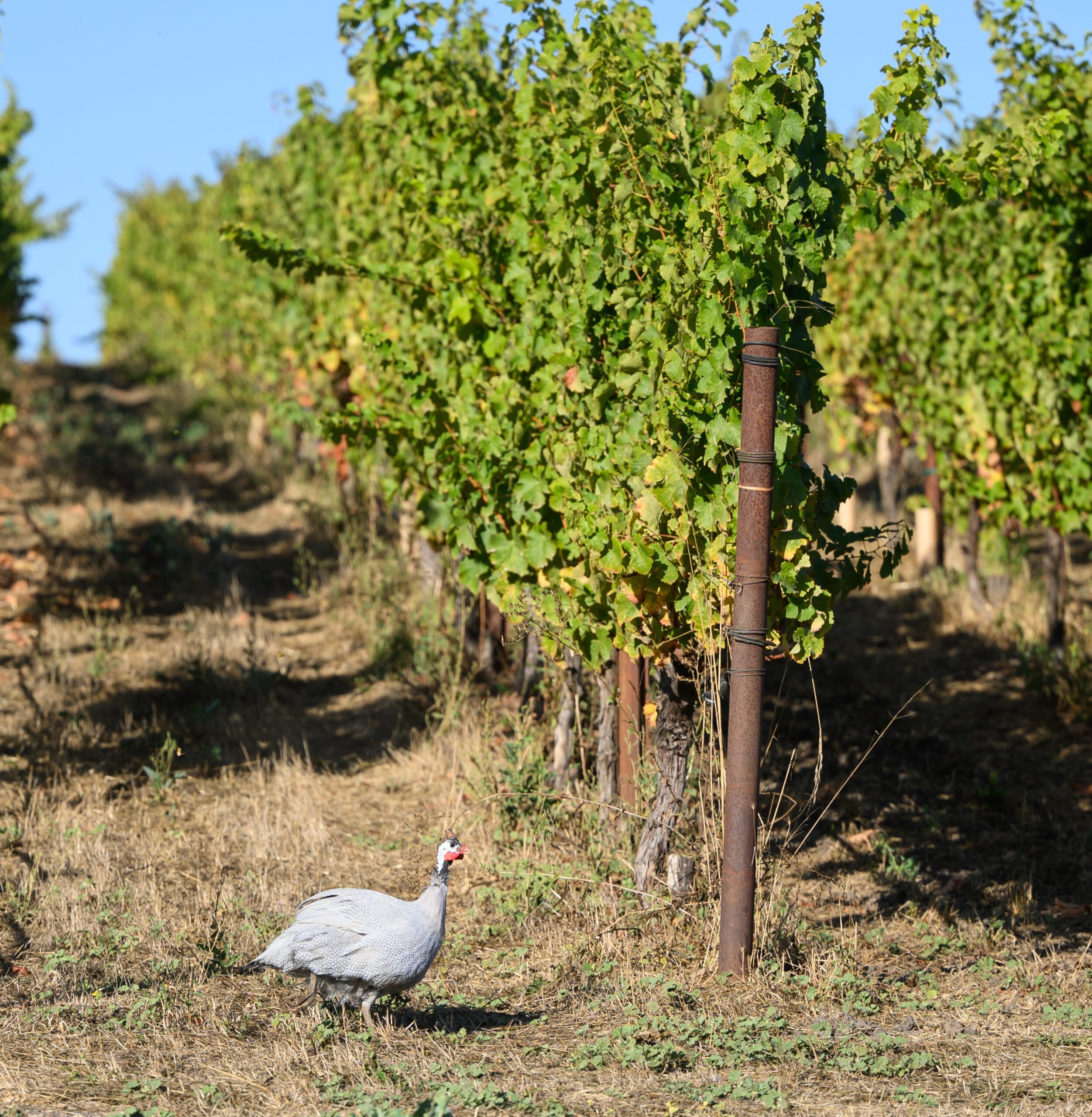‘Cover’ing our Bases:
The Regenerative Rationale Behind Cover Cropping

When guests set foot in our vineyards for the first time, they often remark how different our vineyards look compared to others in the valley. The difference is palpable – so much life aside from vines abounds, both flora and fauna. But why do we make such an effort to foster things aside from our bread and butter – grapevines? Interestingly enough, it’s all for their benefit!
The Boon of Biodiversity
Think about the last time you went for a stroll in a decades-old forest – was there only one type of tree flourishing? Probably not! Natural systems need a diverse array of organisms in order to thrive.
A few examples from our own vineyard include:
- The large taproots of radishes are bulky enough to break apart compacted soils, making it easier for more delicate plants to develop
- Mustard (by far the fan-favorite as far as vineyard cover crops go) are nematicidal, naturally killing plant-parasitizing nematodes
- Phacelia are loved by and attract bees, and other pollinators


Flower Power!
We’ve talked a lot about creating a vineyard ecosystem, which of course includes insects. This can get tricky, though, as not all insects are friendly faces – in fact, some carry diseases that can do serious damage to our vines. While many farmers would rely on insecticides to fight them off, we have a different method – flower power!
Though it’s true that there are some bugs that bug us, there are many more that actually help. Fulfilling roles as pollinators, compostors, and (most importantly) eating the insects that can cause harm! Our flowering plants are very attractive to these insects, allowing us to maintain a balance in our vineyards without resorting to chemical pesticides.
Gone, but not Forgotten
If you’ve seen Napa Valley through the seasons, you know that most of the greenery withers and fades when the dry summers hits, and our beloved cover crops are no exception.
However, even in death they hold an important role in our ecosystem. Dried out and mowed down, they act as a sort of armor for our soil, preventing it from heating up. This allows the soil microbes, living organisms vital to soil health, to survive even heat spikes of up to 110 degrees Fahrenheit!
This ‘soil armor’ also prevents water loss, crucial in the driest months of the year. It’s also instrumentally important during uncommon harvest-season heat waves, when scorching ground temperatures can rise and cook grapes on the vine.

